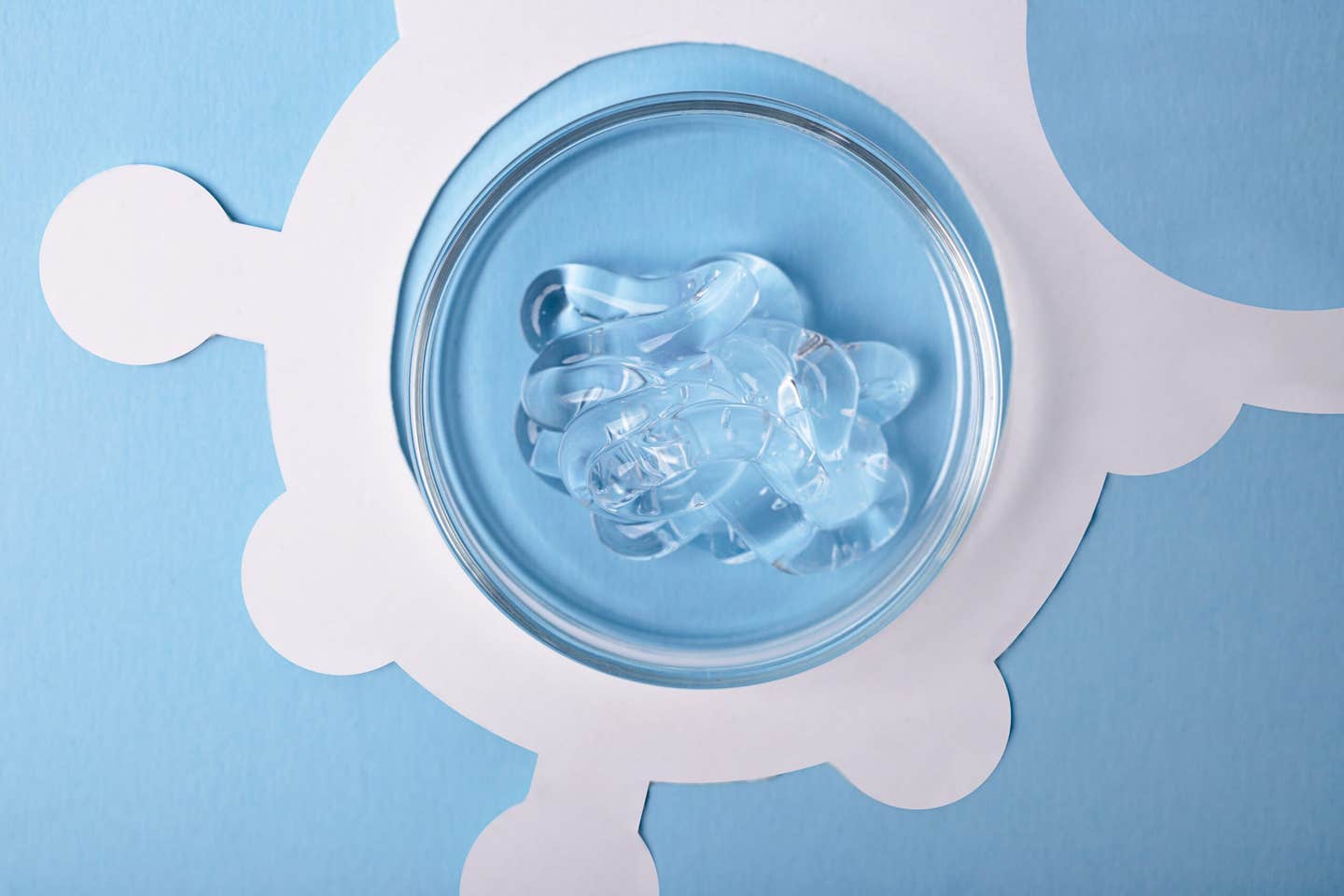Smart nanogel targets and destroys most-feared, antibiotic-immune bacterium
Sugar targeted nanogels kill over 99.99% of Pseudomonas aeruginosa, offering a new way to tackle biofilms and antibiotic resistant infections.

 Edited By: Joseph Shavit
Edited By: Joseph Shavit

As antibiotic resistance rises, a Swansea led team has built a sugar coated nanogel that homes in on Pseudomonas aeruginosa and destroys even shielded biofilms, hinting at a new class of precision antibacterial therapies. (CREDIT: Shutterstock)
Hospitals around the world are bracing for a future where common infections no longer respond to standard drugs. Among the most feared culprits is Pseudomonas aeruginosa, a bacterium that shrugs off many antibiotics and hides inside slimy biofilms on catheters, lungs and wounds. Now, a team led by Swansea University has unveiled a tiny new weapon that almost completely wipes this superbug out.
Why This Superbug Is So Hard to Kill
Pseudomonas aeruginosa preys on people when they are most vulnerable. It often infects those with weak immune systems, chronic lung disease or open wounds. Once it settles on a surface, it creates a biofilm, a sticky three dimensional layer that shields the bacteria from antibiotics and the immune system.
In that fortified state, the microbes can survive high doses of drugs that would normally clear an infection. For patients in intensive care units or with long term medical devices, that resistance can mean longer hospital stays, more complications and higher risk of death.
You live in a world where that resistance is rising. Doctors urgently need treatments that can hit bacteria in free form and inside biofilms without harming human cells.
How a Sugar Guided Nanogel Hunts Bacteria
To meet that challenge, researchers designed a flexible particle called a heteromultivalent nanogel. It sounds technical, but the idea is straightforward. The nanogel acts like a guided smart bomb.
The core is a soft network of linked polymers. Onto that framework, the team attached two types of sugar molecules, galactose and fucose, along with a short antimicrobial peptide. The sugars are not random decorations. Pseudomonas aeruginosa carries proteins on its surface, called lectins, that naturally grab these sugars.
When the nanogel enters an infected area, galactose and fucose latch onto those lectins. That multigrip binding pulls the particle tightly onto the bacterial surface. Once there, the attached peptide drives the next step. It punches into the microbial membrane, tears it apart and triggers rapid bacterial death.
Crucially, the nanogel was designed to leave surrounding healthy cells alone. In early tests, human tissue cells remained largely unharmed, even at doses far higher than those needed to kill bacteria.
Crushing Free Bacteria and Tough Biofilms
In laboratory experiments, the results were striking. At a concentration of just 8 micrograms per milliliter, the nanogel inactivated more than 99.99 percent of free floating Pseudomonas aeruginosa within 12 hours.
That alone would be impressive. The bigger test came with biofilms. These are the dense bacterial communities that cling to medical devices, lung tissue and wound beds. Within 12 hours of treatment, the nanogel wiped out more than 99.9 percent of the bacteria hiding inside those biofilms.
Microscopy backed up the numbers. Scanning electron images showed bacteria that looked crumpled and collapsed after exposure. Confocal imaging revealed biofilms that had thinned, broken and lost their smooth structure.
Researchers also watched the effect over time. The killing did not fade after a quick hit. The nanogel kept suppressing bacterial growth for more than three days, which suggests it could help stop infections from bouncing back.
Beyond One Superbug: A Wider Safety Net
The team did not stop at one pathogen. They also tested the nanogel against Escherichia coli and methicillin resistant Staphylococcus aureus, better known as MRSA. Those bacteria did not bind the sugars as strongly, so higher doses were needed. Even so, the system still achieved around 90 percent inhibition of E. coli at 32 micrograms per milliliter and MRSA at 16 micrograms per milliliter.
Safety tests gave encouraging results. Fibroblasts, which represent human connective tissue cells, kept over 80 percent viability at nanogel levels up to 1 milligram per milliliter. Red blood cells showed no significant damage. For you, that means the material looks gentle on human cells, at least in these early studies.
Because the core gel, sugars and peptide can all be swapped or tuned, the platform is flexible. In the future, scientists could tailor different sugar patterns and antimicrobial fragments to match other dangerous microbes.
Building a New Class of Antibacterial Therapies
The work reflects a partnership between Swansea University and Freie Universität Berlin, blending expertise in chemistry, polymer science and nanotechnology. The main corresponding author, Dr Sumati Bhatia, a Senior Lecturer in Chemistry at Swansea, sees the project as a turning point.
“Leading this research, alongside our international partners, has been incredibly rewarding. It opens a new direction for using glycan-based polymer systems as a therapeutic strategy against pathogenic bacteria and could lay the foundation for a new class of antibacterial therapies against contagious bacterial infections,” she said.
Funding from the German Science Foundation is allowing Dr Bhatia and colleagues to push the technology further at Swansea. The next steps will likely include tests in animal models, studies of how the nanogels behave in living tissues and work on scaling up production.
Those stages will decide whether this approach can move from a lab bench to hospital wards. For now, the concept offers a hopeful sign that chemistry and smart design can outmaneuver even hardened superbugs.
Practical Implications of the Research
For patients and clinicians, this research points to a fresh way to fight infections that no longer respond well to antibiotics. A nanogel that can home in on bacteria, break through biofilms and spare healthy cells could change how stubborn lung, wound and device related infections are treated.
If the technology succeeds in animals and clinical trials, it could reduce the need for high dose broad spectrum antibiotics. That would help preserve existing drugs and slow the spread of resistance. For someone in intensive care, that shift could mean a shorter hospital stay, fewer complications and a better chance of recovery.
For scientists, the work offers a modular platform. By changing the sugars or peptides, teams could design versions that target other bacteria or even fungi. That flexibility may speed the development of custom therapies for different infections rather than relying on one size fits all drugs.
At a larger scale, the study shows how nanotechnology and glycochemistry can work together. Instead of flooding the body with chemicals, future treatments might bring small, guided particles directly to the microbes that cause harm. That approach promises more precise medicine with fewer side effects.
Research findings are available online in the journal Angewandte Chemie.
Related Stories
- Antarctic microbe has major food, cosmetic, and medical potential
- New combination drug therapy effectively treats chronic wound infections
- Scientists wake up microbes trapped in Arctic permafrost for 40,000 years
Like these kind of feel good stories? Get The Brighter Side of News' newsletter.
Joshua Shavit
Science & Technology Writer and Editor
Joshua Shavit is a Los Angeles-based science and technology writer with a passion for exploring the breakthroughs shaping the future. As a co-founder of The Brighter Side of News, he focuses on positive and transformative advancements in AI, technology, physics, engineering, robotics and space science. Joshua is currently working towards a Bachelor of Science in Business and Industrial Engineering at the University of California, Berkeley. He combines his academic background with a talent for storytelling, making complex scientific discoveries engaging and accessible. His work highlights the innovators behind the ideas, bringing readers closer to the people driving progress.



